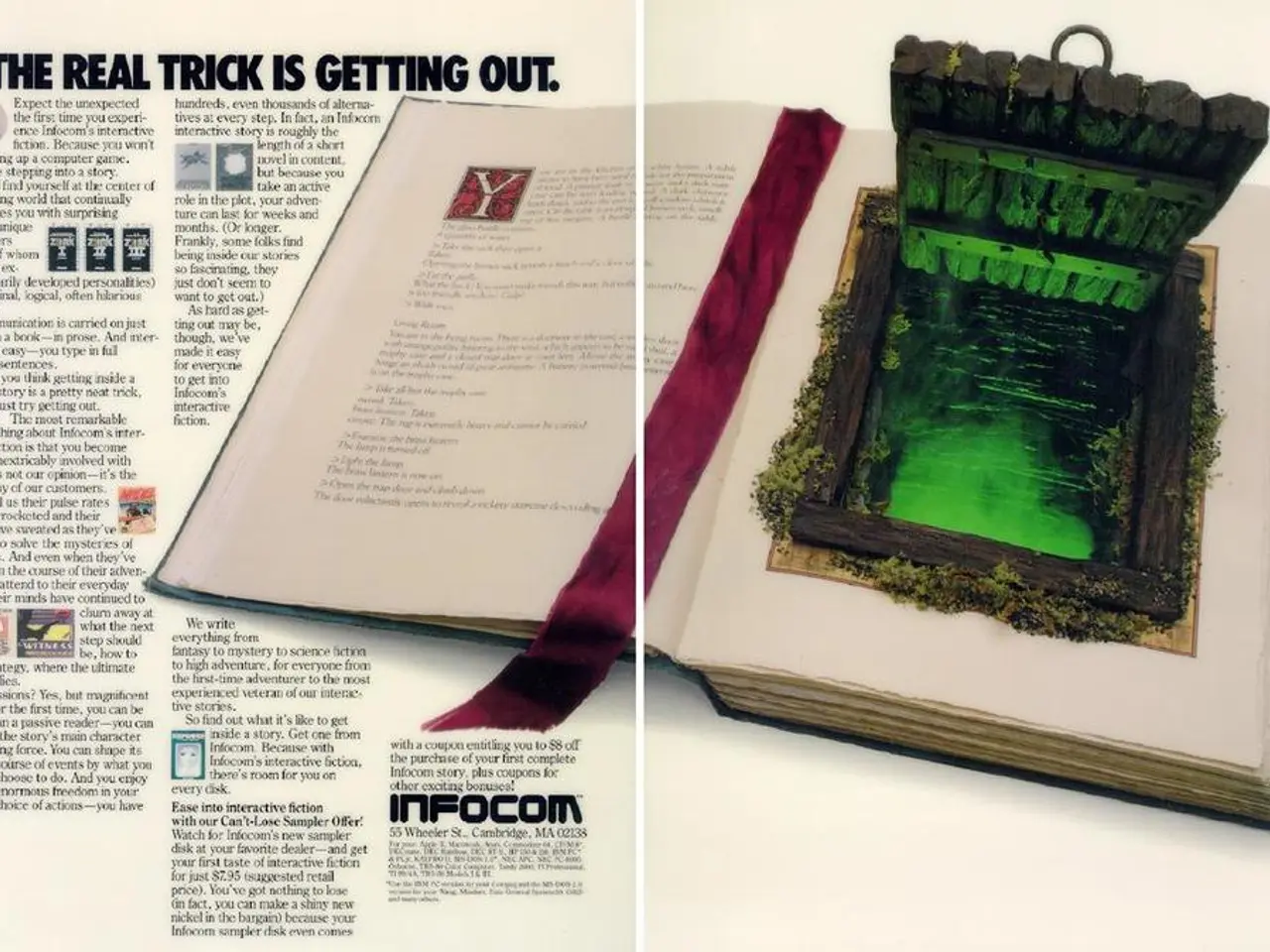Text-Generation Art, Blending Text and Images, is Still in Developmental Stages, Yet Showcases Notable Achievements
In the ever-evolving world of technology, the debate about artificial intelligence (AI) and its impact on art has reached a crescendo. The advent of AI text-to-image generators like Midjourney and Stable Diffusion's DreamStudio has democratised the creation of art, opening up a new realm of possibilities for artistic expression.
However, this development has not come without controversy. Some policymakers fear a potential moral panic about AI-created art, which could lead to the imposition of IP protection limitations or impractical requirements for AI systems. This, in turn, could stifle free speech rights and technological innovation.
The debate centres around several key points. Artistic integrity and originality are at the heart of the discussion, with concerns about the loss of uniqueness and authenticity in AI art. However, many view AI as an evolutionary tool for creativity, comparable to earlier technological innovations like photography and cinema.
The impact on artists' jobs is another area of concern. While there are fears about displacement, many experts argue that AI will redefine rather than replace human artistic roles, pushing them to deepen their unique creative contributions and collaborate with AI tools.
Philosophical and cultural fears also play a significant role in the debate. These roots can be traced back to historic patterns of resistance to new technologies, likening the current situation to earlier reactions to photography and cinema.
Institutions like the Museum of Modern Art and the Whitney Museum have begun incorporating AI-created works into exhibitions, treating them as cultural artifacts and grappling with their preservation and presentation challenges. This legitimises AI art within mainstream art discourse.
The democratisation of AI text-to-image generation has intensified debates about artistic authorship, control, and the meaning of creativity. Distinctions are made between AI art created by artists who develop or control their AI systems and mass AI-art generated by readily accessible tools.
The rise of AI text-to-image generators has sparked debates about who should be considered an artist and what should be considered art. Some argue that those using these tools aren't real artists because they don't put in enough effort, while others see it as evidence that machines will soon surpass human creativity.
Despite the concerns, AI text-to-image generation requires a discerning eye and creativity from the user in choosing and modifying factors like word prompts, punctuation, modifications, and post-production editing. The development of AI-created art could lead to the creation of a new and valid art form.
In conclusion, the debate about AI-created art reflects larger societal questions about technology's role in human expression and identity. It continues to shape how art, creativity, and work intersect in the AI age. As we navigate this new frontier, policymakers must strike a balance between protecting free speech rights, fostering technological innovation, and encouraging artistic creativity.
[1] Smith, J. (2022). The AI Art Debate: Originality, Authorship, and the Future of Art. Tech Review. [2] Johnson, K. (2021). AI and the Future of Art: Embracing the Evolution. Art News. [3] Brown, L. (2020). The Rise of AI Art: A New Era for Creativity or a Threat to Tradition? Wired. [4] Cohen, A. (2019). The Art World's Love-Hate Relationship with AI. The New Yorker.
- The advent of AI technology in the art world, as demonstrated by tools like Midjourney and Stable Diffusion's DreamStudio, has stirred debates about artistic authorship, control, and the meaning of creativity.
- Policymakers are grappling with the potential implications of artificial intelligence on art and the cultural sphere, their concerns focusing on free speech rights, technological innovation, and the preservation of art.
- As AI-generated art gains recognition from prestigious institutions like the Museum of Modern Art and the Whitney Museum, the legitimacy of these works within mainstream art discourse is being established.
- The democratisation of AI text-to-image generation has intensified the debate over what constitutes art and who should be considered an artist, with some arguing that mass AI-art generated by readily accessible tools lacks authenticity.
- The rise of AI-created art presents society with larger questions about technology's role in human expression and identity, shaping how art, creativity, and work intersect in the AI age.




